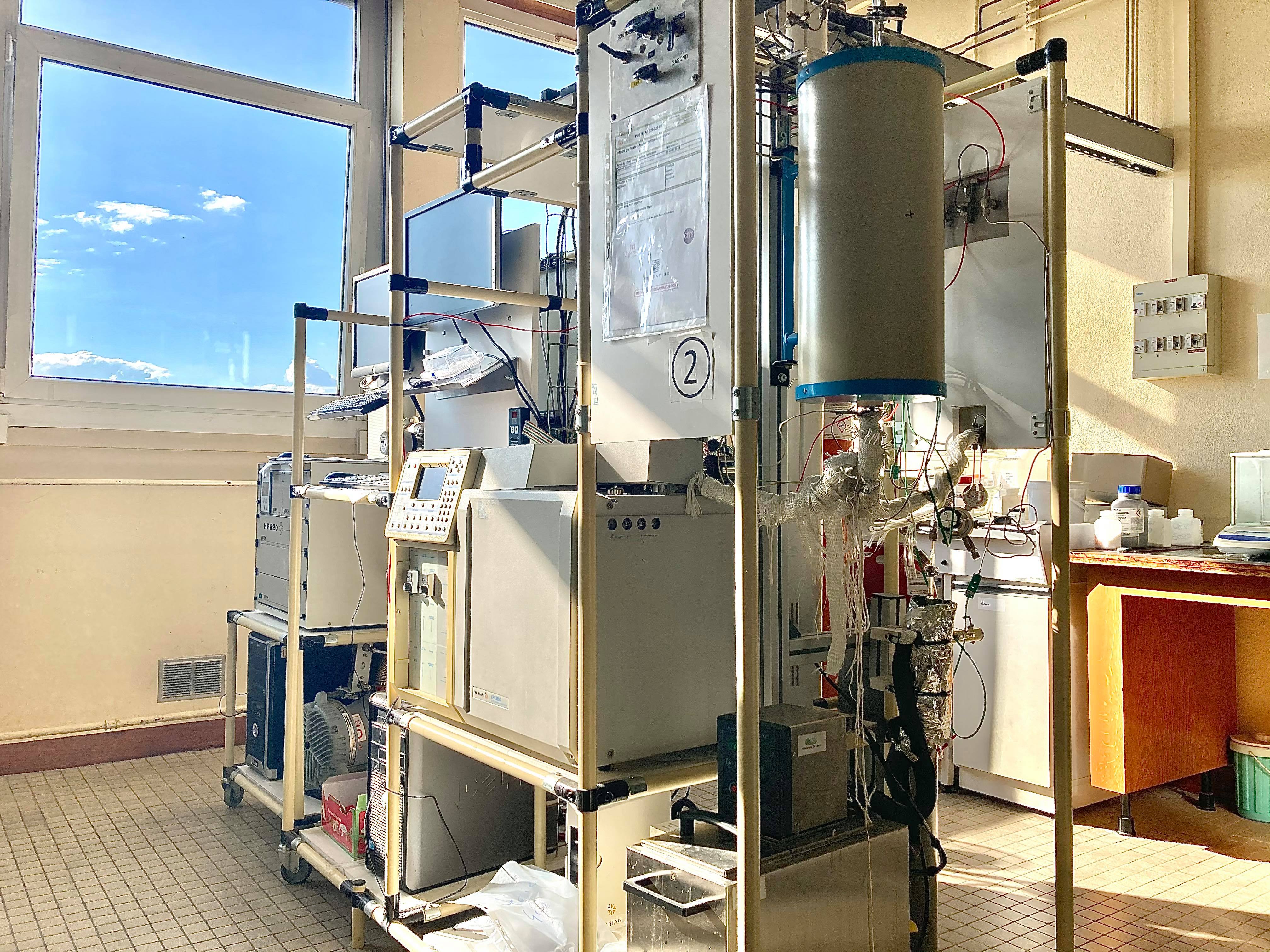ZEOCAT-3D publishes its first scientific article on ethylene transformation
Studying how ethylene reacts during methane dehydroaromatization opens new doors to understanding rapid catalyst deactivation and building ZEOCAT-3D pilot reactor
By Antoine Beuque (Centre National de la Recherche Scientifique, CNRS)
Just as ZEOCAT-3D celebrated its second anniversary, an article titled: “Transformation of Dilute Ethylene at High Temperature on Micro- and Nano-Sized H-ZSM-5 Zeolites” summarises the first research results attained by the CNRS team participating in the project. The paper was published by the “Catalysts” journal on 21 February 2021.
Catalytic methane dehydroaromatization (MDA) under non-oxidative conditions has been receiving growing interest over the last three decades. Indeed, this process offers a direct route to transform methane into benzene, simultaneously generating “clean” hydrogen, therefore offering great potential as far as the future of sustainable energy resources is concerned. Yet, MDA faces two significant hurdles: (i) low activity, as the one-step conversion into benzene is thermodynamically limited (12% at 700 °C), and (ii) rapid catalyst deactivation.
To be more specific, MDA operates under oxygen-free conditions, meaning that methane does not oxidize into CO2. Since the reaction produces hydrogen without releasing CO2, the resulting hydrogen is, by default, more respectful of the environment and overall more sustainable. However, the thermodynamic limits of the reaction only allow to convert small amounts of methane at relatively high temperatures, and keeping the catalyst activity ongoing during the process, under such harsh conditions, is challenging.
The ZEOCAT-3D project originated under the overall goal of developing new types of catalysts – specifically “3D shaped” catalysts – to mitigate deactivation during the MDA and deploy a prototype reactor to transform methane into benzene.
The project consortium members are working on various aspects of the process design, such as modelling, laboratory, and industrial processes. In particular, the CNRS team in Poitiers and Lille focuses on characterising the physicochemical properties of the catalyst, including its performance. Before constructing the pilot plant, understanding the key steps to select the appropriate catalyst has revealed itself as mandatory. The latter is the target of the CNRS team.

To improve the stability of the catalyst, it is crucial to widen the existing knowledge of the different deactivation modes in the MDA. In addition, this task is further related to the catalyst’s design based on improving its textural properties and shaping.
It is generally accepted that the MDA reaction implies two stages. First comes methane activation on molybdenum carbide (or molybdenum oxy-carbide) moieties to form CHx fragments. Then, such fragments are dimerized and cyclized on Brønsted acid sites to produce aromatics such as benzene and naphthalene, with high selectivity. These compounds are further aromatized at longer reaction times, leading to coke accumulation and a higher likelihood of catalyst deactivation.
Currently, the first step is studied through advanced modelling approaches by our colleagues in Lille. Though the exact reaction mechanism is still a matter of discussion, the process does generate ethylene. As an intermediate species, ethylene may act as a coke precursor, leading to the observed fast catalyst deactivation. The ethylene appearance as a by-product of the reaction led us to think that investigating ethylene dehydroaromatization (EDA) in the same operating condition as MDA might enable a deeper understanding of the second step of the MDA mechanism.
In our newly published paper, we gathered new insights concerning the deactivation step: (i) we found out more about the growth of the coke molecules on both external zeolite surface and internal channels, (ii) we understood that limiting the zeolite crystal’s length of the diffusion path (i.e., reducing the crystal size) leads to higher catalytic performance in terms of activity, benzene selectivity and deactivation. We consider this an essential step towards increasing the stability of the reaction within the pilot we are working to build for the ZEOCAT-3D project.
Definitely, ZEOCAT- 3D has a promising future ahead. Breakthroughs in the different fields crossed by the project are currently in sight, further promoting the development of the most suitable, cleaner, and efficient processes for the catalytic transformation of hydrocarbons. Furthermore, using state-of-the-art Life Cycle Assessment (LCA) methods, the ZEOCAT-3D project might decide to follow up on MDA as a new source of clean energy for CO2-free hydrogen production. In this respect, reducing catalyst deactivation is a crucial point on which it is well worth investing our efforts.
In conclusion, the published paper can be regarded as a clear step forward in studying the MDA as a kinetic deactivation mechanism. In addition, limiting the diffusion pathway of the catalyst allows higher activity and benzene selectivity, whilst the catalyst deactivation is significantly mitigated. However, it is worth keeping in mind that this study reveals only a part of the complete MDA mechanism. Supplementary studies and experimental activities are required to fully understand the catalyst deactivation, which the CRNS team is already pursuing.
We promise you exciting progress will be unveiled in the following months.
Stay tuned for more news from the CRNS team and ZEOCAT-3D!
